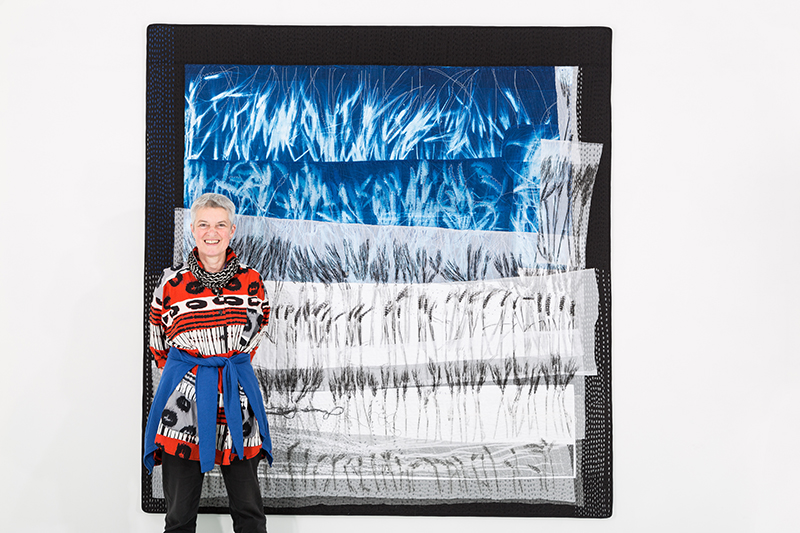
The International Quilt Study Center and Museum will host the first United States solo exhibition of the millennium for Pauline Burbidge, one of the United Kingdom’s top quilt artists.
“Quiltscapes by Pauline Burbidge,” will be on display at Quilt House Oct. 14–March 25.
The museum will celebrate the opening with a reception on today from 5:30-7 p.m. Burbidge will give a lecture during this event, which is free to University of Nebraska–Lincoln faculty members, staff and students.
“Pauline Burbidge is one of the top artists in the world and has been working in the medium for more than 40 years,” said Carolyn Ducey, the museum’s curator of collections. “She has continued to develop her unique style and voice and we are excited to show some of her most recent work. Her work has evolved over time from geometric patchwork to her stitched drawings, which is what visitors will see on display at Quilt House.”
Burbidge creates rich depictions of nature through her mastery of textiles. Her pieces express both distant horizons and intimate details of nature that inspire a sense of spirituality and connection she feels deeply.
“I am hoping to inspire others to ‘make’ and work with textiles,” Burbidge said. “I would like to inspire a younger generation to work with the joy of ‘making’ and working directly with your hands, with physical materials--in a world that is being dominated by the digital screen. Also to treasure and value the natural world around us. Both textiles and nature are of great importance to me.”
This exhibition features Burbidge’s explorations of water and grasses, layered in horizontal bands with row after row of stitched lines like the outlines of varied landscapes. Though seemingly simple, Burbidge uses complex structures to build her scenes through a combination of pleating, stitching, dyeing and painting.
The quilt museum’s collection holds 11 of Burbidge’s pieces, including some of her earliest works.
For more information on Burbidge and her work, visit http://www.paulineburbidge-quilts.com.
More details at: http://www.quiltstudy.org